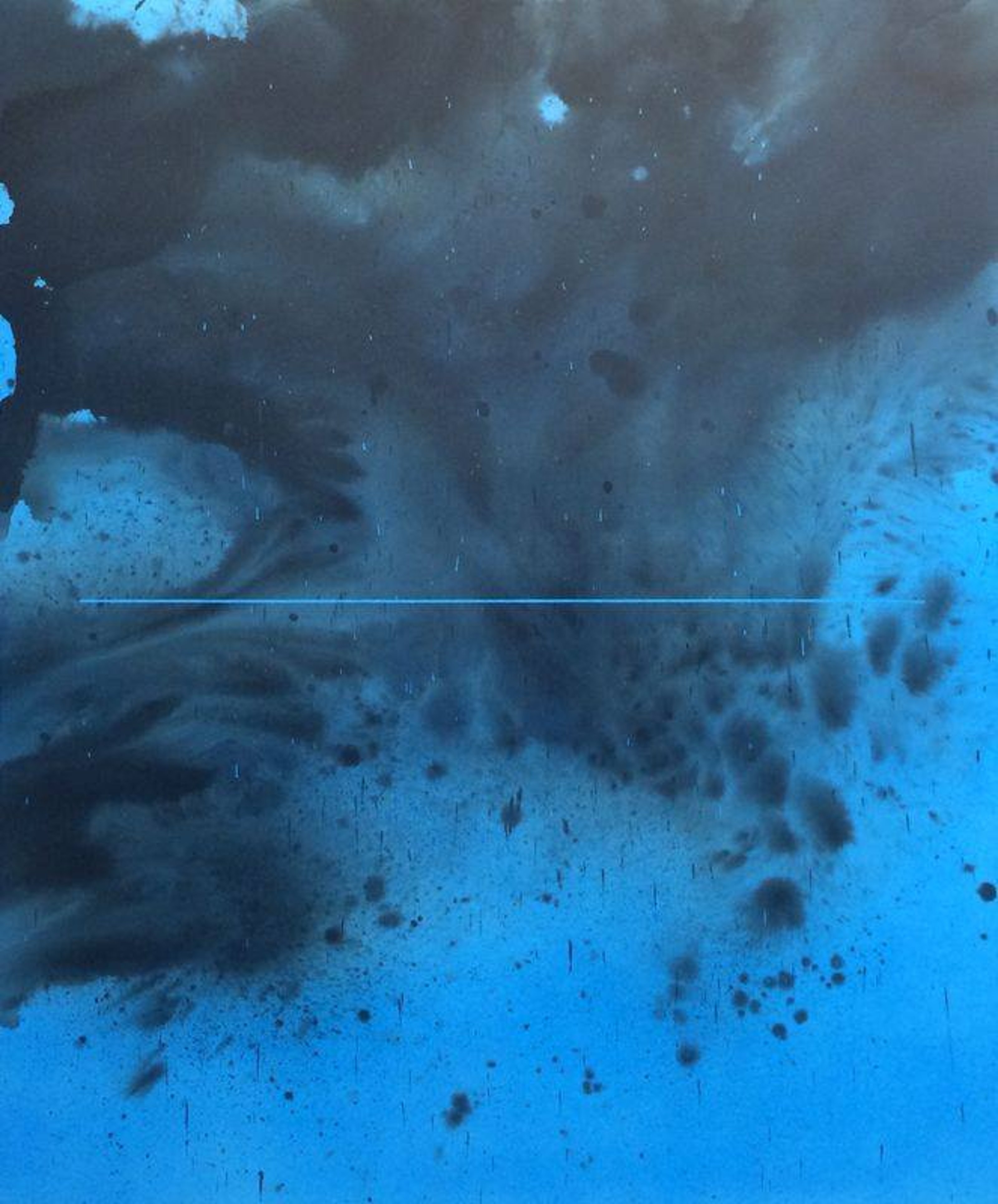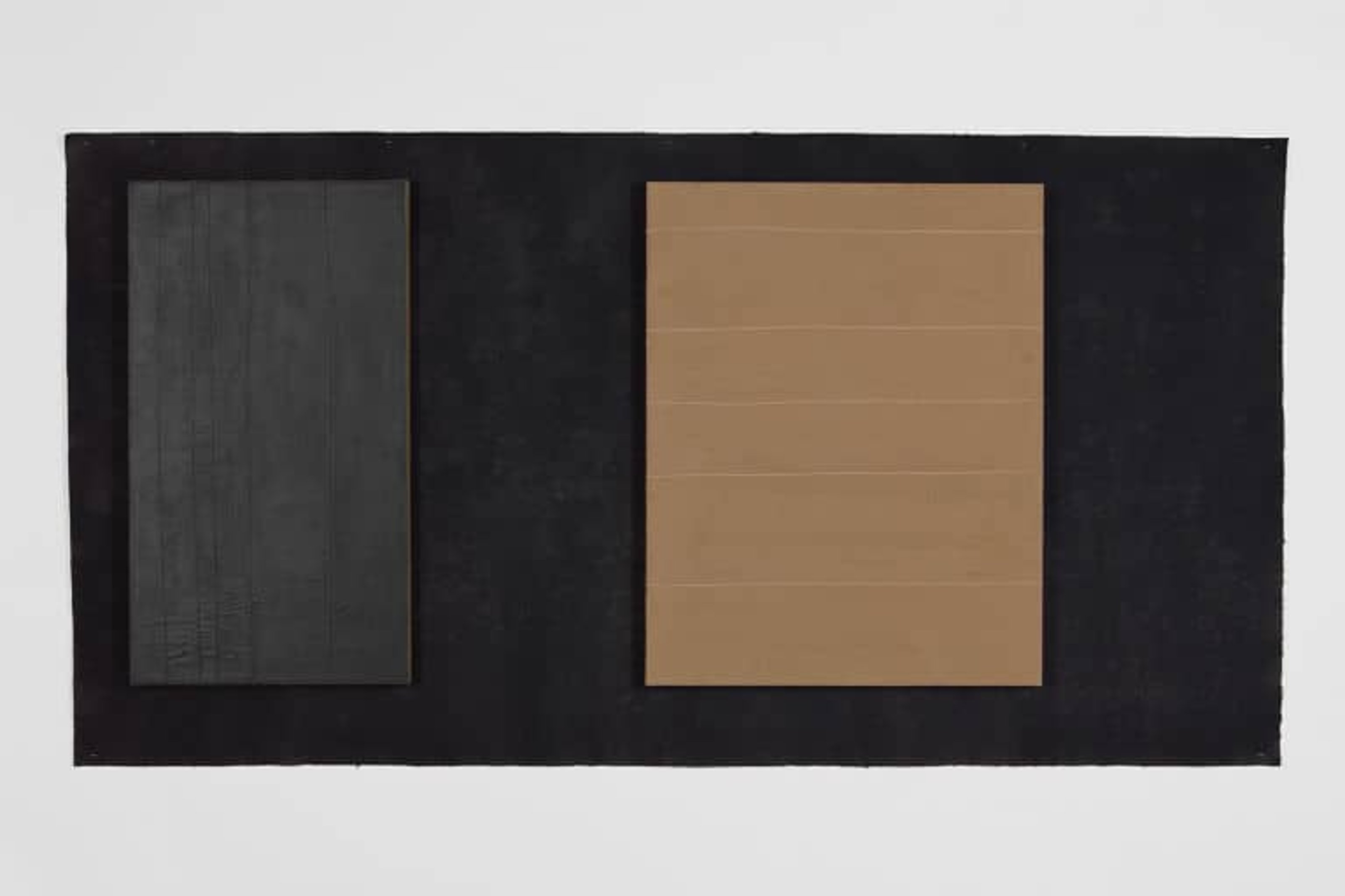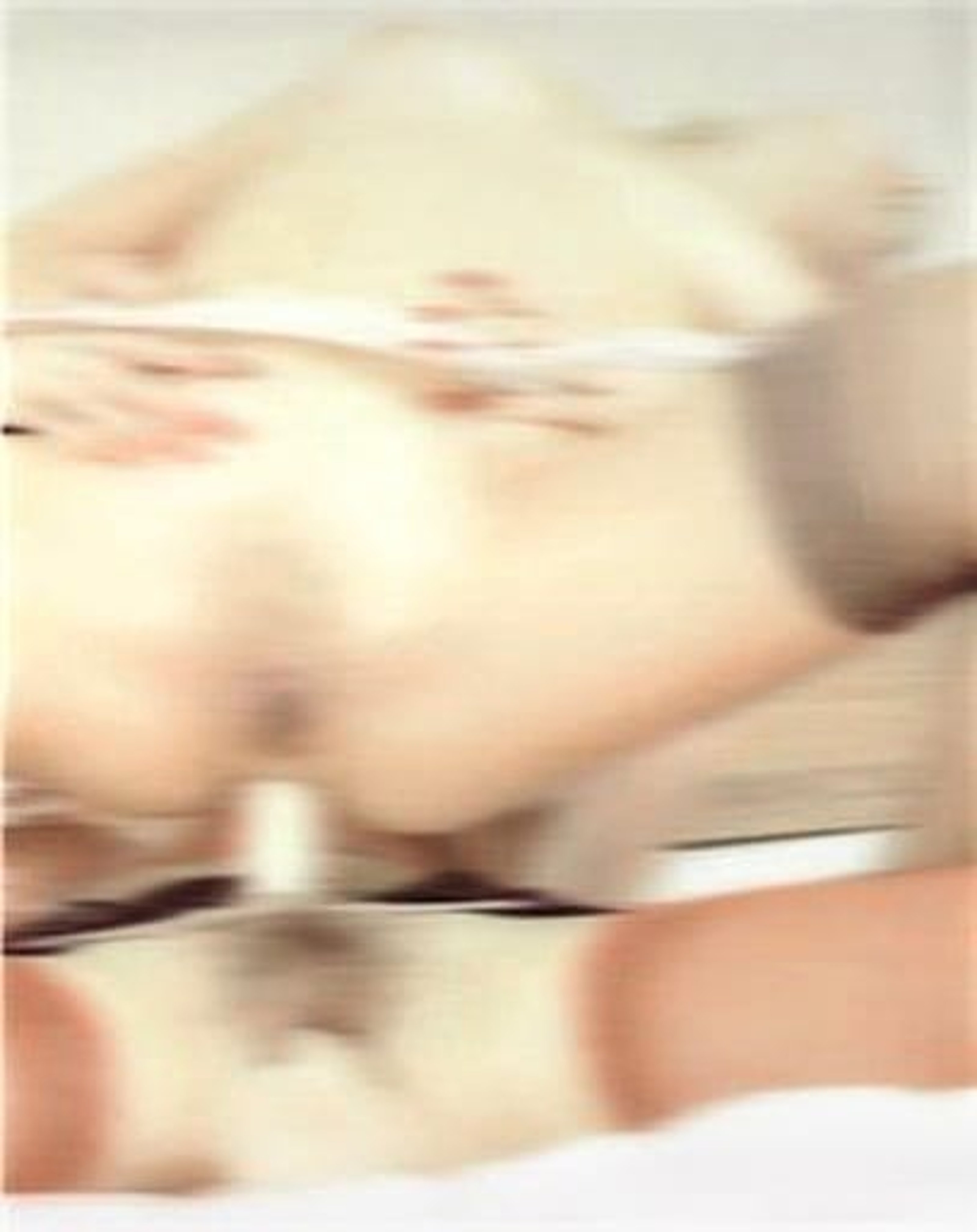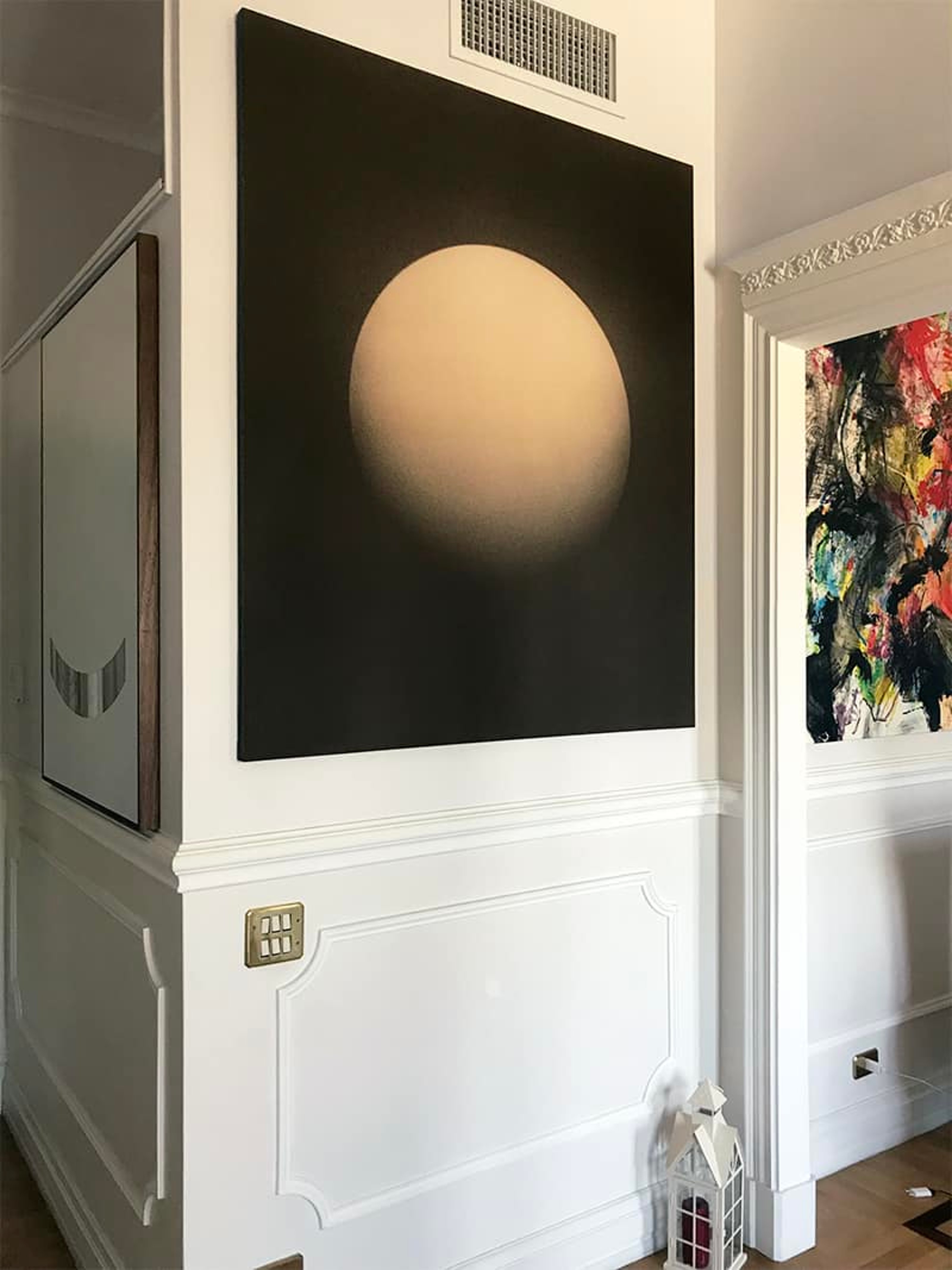

Andrea Festa unconsciously started his first official collection at the age of eight when he realized throwing away read comic books would defy the ethics of his nature. Or, at least, his appreciation for the visual narrations. After moving to Rome and beginning a life from scratch with the welcoming — yet nonetheless demanding — task of turning an unfamiliar, naked apartment into a home, he started to look for artworks that could accompany his biography to come. His participation in fairs, auctions and gallery events eventually led to a new enthusiasm that would soon reflect Festa’s interest in collecting. Because, for Festa, yesterday is yesterday. And tomorrow, well, that’s a myth after all.
Collecteurs: You’ve had an appreciation for the arts since practically forever. How did you get into collecting?

Andrea Festa: I guess, I’ve always been sensitive to art. I studied theater in high school, which continued after graduation and eventually led to my move to Rome. Collecting began in 2008, the year I moved. I had a beautiful apartment that overlooked the Cloister of Bramante (Chiostro del Bramante). It was completely white, unfurnished. A clean slate. I’ve always thought that a house — being a place where one lives and rests — reflects one’s personality, curiosity, and limitations. I wanted to express myself, even if indirectly, with works of art. So from scratch, I started to attend exhibitions, auctions, etc. I’ve always been a collector at heart, though. As a teenager I read a variety of comics, and even catalogued them. Later on, because of my passion for cinema, I began collecting VHS and DVDs. In the end, I think it was a natural first step to buy art with the purpose of furnishing my home, eventually growing into an actual ambition.
C: Browsing through your collection, we noticed you mostly collect paintings and sculpture.
AF: That’s true, I prefer paintings and sculptures. But it doesn’t mean I don’t appreciate video or photography as an artistic medium. I have great works by Thomas Ruff and Axel Hutte. But if I get one shot, and one shot only, I’d choose a painting most likely. I’m in love with sculpture too, it’s just a matter of having enough space.

When it comes to painting, I especially like material painting because the process and material is actually visible. Like N. Dash, Marco Tirelli, James Krone, or Matt Sheridan Smith.
C: What triggered the initial need to start collecting comics? We’re wondering what’s at the foundation of collecting, the primal human instinct, if there is one…
AF: It happened naturally. Up until I was 15 years old, I was completely submerged in the world of comics. The thought of throwing them away after having read them seemed terrible to me. So I started to put them aside, an action which leisurely would lead up to a collection, totally subconsciously.
I would often revisit old issues, to read the whole story or just a few pages. With artworks it works similarly, I think. You buy it, then hang it. A while after, you buy a new piece, so something ends up in storage. And a while after that, you remember the piece in storage, so you take it out, and hang it again… My comics collection still exists. I have this romantic idea that one day I’ll pass it on to my son, hoping he’ll enjoy it as much as I did and still do.
C: That’s interesting, a collection originating from the initial refusal of throwing things away. If we start to think like that, though, we also start to fetishize objects, especially if their nature is intellectualized in some form. We wouldn’t immediately assume a woman’s set of nail polish could be a collection, would we? So what are the preliminaries of a collection?
AF: That’s true. I don’t think the word ‘collector’ can solely be associated with the art world. There are collectors of all kinds — coins, stamps, wine, posters, and so on.Once, on a TV program about the strangest collections in the world, I watched an interview with a man who had spent his whole life collecting used women’s underwear. His most cherished piece belonged to Marilyn Monroe. Crazy, isn’t it?

I think a collection originates when it matters personally. For example, I love reading. But if a book is good, I’ll pass it on to my parents, or a friend who I know will appreciate it. If I don’t like a book, I voluntarily forget it on trains, planes or in hotel rooms. Maybe someone finds it, and ends up loving it. This theory isn’t totally applicable to visual art, considering the monumental value it has gained over the past years. But your primary impulse to desire having books around is, in my case, the very same with art.
C: Referring back to your comment about that man collecting women’s underwear, it’s what I mean about the societal implications that come with collecting. I’m pretty sure that man’s passion is stigmatized as a fetishist, rather than a collector, don’t you think?
AF: Yes, perhaps I’ve gone too far with this example, but do you think there’s such a big difference between an art collector and a collector of design or wine? Don’t you think a bottle of wine possesses a similar amount of talent and creativity?

Here’s what’s important, I think: it’s not what you collect, but how you collect. As well, we need to be careful that our passion doesn’t turn into an obsession.
C: I guess it reemphasizes my thought about the term ‘collector’ having some limitations around it. That man’s passion is most likely seen as an obsession, if anything. Generally speaking, what makes passion turn into obsession? Is it an obsession when it starts becoming existentialist?
AF: During my years of collecting I’ve seen very different types of people, which is another benefit about joining the collector’s circle and the art world; a lot of interesting people, with so many stories. I’ve met a lot of professional figures, like lawyers, doctors, CEOs, some very rich and powerful. You see them in their world, interacting confidently. But at art fairs, or whenever in midst of a deal concerning an artwork, they turn into something else. Somehow they become children. And it’s here where I often notice a lack of control, a passion becoming unhealthy. Make sure things you own don’t start to own you.
C: You’re especially interested in artists of your generation. Does this have anything to do with seeking a connection that pertains to a similar past?
AF: Since the beginning I’ve collected artists of my generation, both emerging and mid-established. These particular types of work are economically feasible, and there’s usually a personal connection with the artist and their story. It’s exciting, almost like a hunt. It starts by discovering a new artist, which then turns into looking for the right piece until I’m set to buy. If there wouldn’t be any monetary limitations, I’d also focus on historical or well-established artists. By collecting young artists, I have the opportunity to constantly remain active within the field.
Then there’s also the matter of having a personal connection. If you talk to me about Renato Guttuso or Giorgio de Chirico, I’d agree they’re great painters. Yet, I would never buy their works. Older artworks — 70-100 years old — make me melancholic. There’s that persisting thought of the previous owner having passed away, that idea of objects resisting time while we perish… The past is overrated, the future doesn’t exist. So I want to focus on the present and live every moment with my eyes and ears wide open. That’s why I collect from the artists of my generation. It’s fresh, without a sea of pre-existent references. I feel a part of it and it’s a language I know.

LK: The past, and its nostalgia does get in the way of things… But without it, there’d be no present either. It seems like your general disinterest in the past and future is also a little connected to it proving your own mortality.
AF: Definitely. I actually don’t look at the past because I get easily trapped in between melancholy and nostalgia. Dealing with mortality is never fun.
C: Your country, Italy, doesn’t seem very present within your collection. We’re curious if there’s a general lack of connection when it comes to artists from home.
AF: That’s partially true. I own some works by emerging Italian artists like Serena Vestrucci or Gabriele De Santis, as well as more established ones like Marco Tirelli, Carla Accardi, and Mario Schifano. But I can’t deny they’re in the minority. I think it’s my fault, I’m a lazy collector.
I once asked an established collector how he managed to build a collection with such important names. He said it’s important to choose a group of well-established gallery owners with a taste similar to one’s own, and then to grow with them over the coming years. I try to stay informed about the art world via online research. Yet, in the end, I always end up buying from the same galleries. It has turned into a trusting relationship, and unfortunately not many young Italian artists are represented by them. Older, historically important artists, yes, but they’re out of my reach.

Melike Kara Untitled, 2017

C: What makes it worthwhile to coexist amongst art every day?
AF: It gives me joy to wake up and walk around my house filled with art. It’s everywhere, even in the bathroom. I love looking at them and, like songs, they’re postcards of my life. Each work immediately brings back the moment I bought them. It’d be silly to deny my taste hasn’t changed since the beginning, when I would still acquire works in a child-like manner, randomly.
Today — even if emotional value is still a big part of my choices — my mistakes have lessened. There’s a plan behind my actions, everything’s more and more researched. I know where I’m going, just like aging has made me doubt less what I want as a man.
C: Do you think we often return to things in hopes of encountering a similar meaning from the past, an emotion we’ve lived once before?
AF: When I’m in front of an artwork, I return immediately to the moment I first noticed it. The mood of these very seconds, who I was with. Whether it relates to a funny or melancholic moment, it all exists inside the relationship with the painting. It’s like a spiderweb of different emotional realities.

C: What else has been a positive consequence of your collecting venture?
AF: By attending fairs, I’ve also had the chance to visit cities I probably wouldn’t have seen otherwise. Like Rotterdam, Brussels, or Cologne.
C: Any valuable lessons?
AF: Many. I learned how to negotiate the sale price. On previews you’ll have the best choice, but on the last day you’ll have best price. From whatever perspective, I always see the glass half full. I’ve also learned what galleries I like, what it means to be humble and follow the advice of people who are more experienced. There are galleries, which, apart from being excellent at selling, have people with a great eye in discovering art.
I spend as much time as possible updating myself about the art world. But I also have my job as a pharmacist, and other interests. So I know the best I can do as a collector is to share my passion, and be prepared to grow patiently with the things around me.

